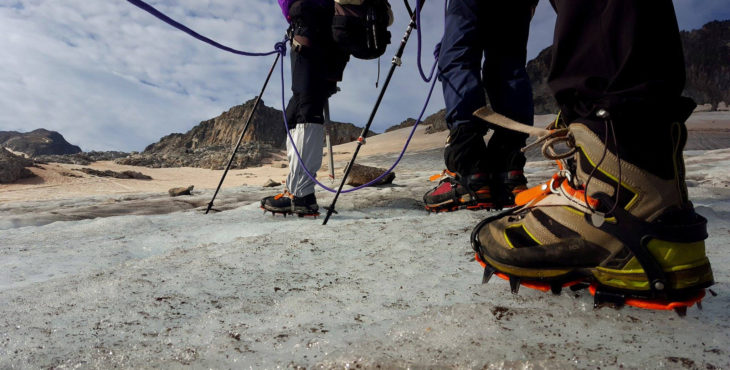Each year the winter snow retreats to higher altitudes and leaves behind less and less of the white stuff as summer draws nearer. The images published by the Benasque Valley guides in August 2017 showing the condition of Aneto Glacier revealed a névé at the point of disappearing, exposing the old, black and compact ice of the glacier which slowly yet constantly thawed during the rest of that summer.
When the névé completely disappears, climbing Aneto becomes even more complex and tricky. At lower altitudes, such as from Portillón Superior to the glacier, a chaos of rocks, a common sight in the high mountains, is left bare, which is difficult to walk on due to the lack of a defined path to tread.
Once you reach the glacier, you will need to get out the ice axe, crampons and helmet that you have carried with you to this point. Use them with all the care and experience you have: the points of the crampons go a few millimetres into the snow and, except for mountaineers with a wealth of experience, the feeling of insecurity gives you the sensation that it will be impossible to effectively perform a self-arrest on this terrain, given that it is difficult to stick your ice axe into the ground. If you are not fully comfortable using your ice axe, find a safe place to practice or consider hiring the services of a mountain guide.
When the névé disappears, Aneto Glacier shows off all its grey and black tones. The sun eats away at it, slowly melting it away, so if you make it to the area, stop and admire it for a few minutes as experts say that it will be gone forever in the near future.





Leave a Reply